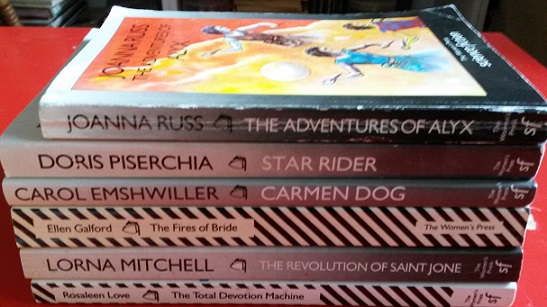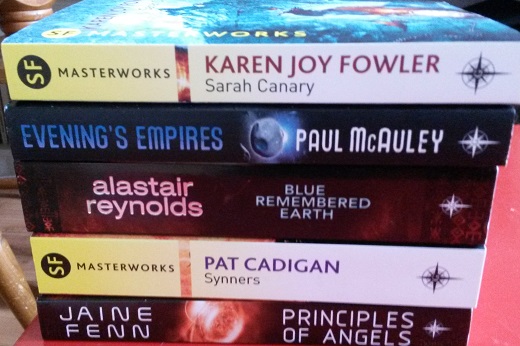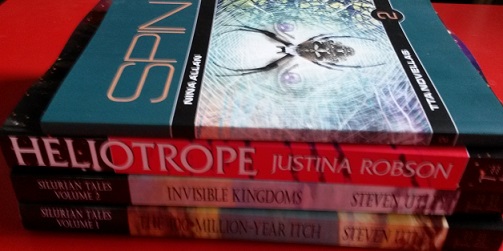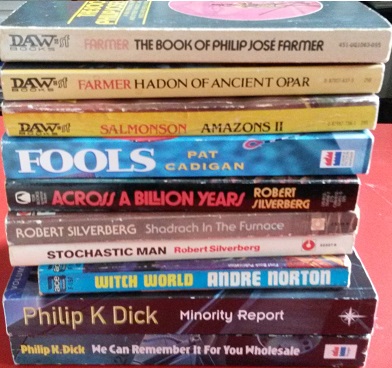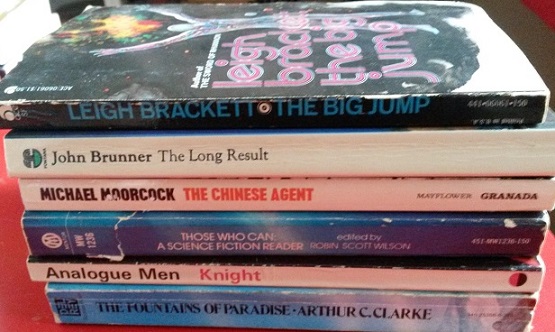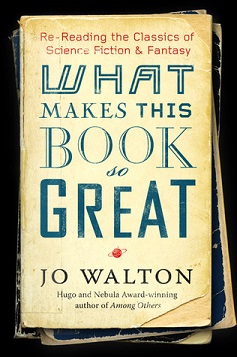
Steampunk
Paul Roland
191 pages including index
published in 2014
If I felt more nasty Reginald Pikedevant’s excellent cri de coeur against steampunk fakery would be my whole review. I spotted Steampunk: Back to the Future with the New Victorians in the library among the new books and thought “great, just the sort of field guide I need to come to grips with this newfangled steampunk nonsense”. Sadly though this turned out to be just a shallow cash in which told me little I didn’t know written in an irritating manner that had my hackles up halfway through the first chapter.
The danger in writing about steampunk is that one starts to write as if one was indeed a Victorian gentleman, with all the loquaciousness and florid prose that image conjurs up. I can’t do that convincingly and neither can Roland, but he gives in to the temptation occasionally, where his normal writing style is much more casual. These style clashes are jarring and annoying, but would’ve only been a minor annoyance had the rest of the book been better.
Modern steampunk is more than just a literary subgenre, but something of a lifestyle, with artists, writers, musicians and not in the least costume makers inspired by the idea of an alternate, up to date Victorian aesthetic. To give a comprehensive picture of this subculture in less than twohundred pages is a challenge. You need a firm grip on the essentials, a vision of what steampunk means throughout all its various incarnations in art, music, literature and costuming. If you can’t or won’t do it, you run the danger of drowning in details and names.
I think Roland makes two mistakes in Steampunk: he doesn’t provide real definition or vision of what steampunk means to him and compounds his error by dividing his chapters by artform, looking at each in isolation. With the limited space he has for each (literature, music, art, costuming/clothing, movies, conventions and the internet) it’s no wonder each chapter is mostly name checking and listing the requisite names. One feature of the book that could’ve helped in this regard, the short interviews with key figures Roland provides, actually end up hindering because they lack any real depth.
I didn’t catch Roland out in any gross mistakes in the part of steampunk culture I know most about, the part that started as a science fiction subgenre, but neither did I get to read much new. Roland touches briefly on the actual nineteenth century scientific romance writers like Wells and Verne but is right not to consider them part of steampunk — lacking that sense of nostalgia and retrofuturism that’s essential to the genre. He then moves on to proto-steampunk like Moorcock’s The Land Leviathan before talking about K. W. Jeter’s “invention” of the genre by analogue to cyberpunk in the late eighties, to refer to the books he and his friends James Blaylock and Tim Powers were writing. Roland is a bit snippy about those early steampunk books, finding them too wild to be real steampunk, not fitting neatly into what the genre would later become.
These were in my view the most coherent chapters in the book, Roland’s short overview of the history of steampunk as a genre and his survey of contemporary steampunk writers. The chapters after that, diving into music and such, are less interesting. When most of the artists interviewed say that they didn’t consider themselves steampunk, you have a problem. It might have helped if he had put the subculture and steampunk fandom front and center rather than trying to cram everything remotely steampunk related into the book.
This isn’t a completely hopeless book, but it’s shapeless and doesn’t rise much above enumeration of steampunk artifacts in its analysis. It needed a better vision to provide a proper narrative. You’re better off just reading the Wikipedia or TVtropes pages on steampunk and following the links…
